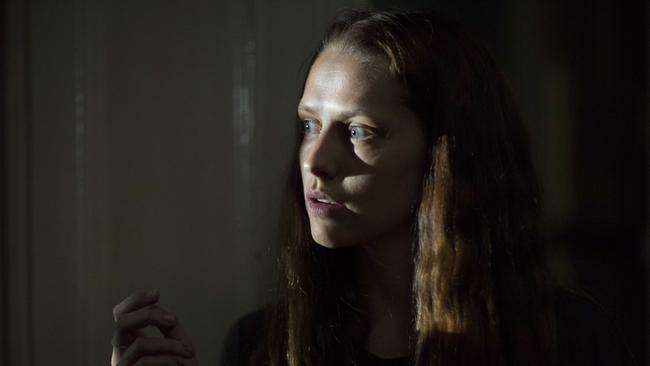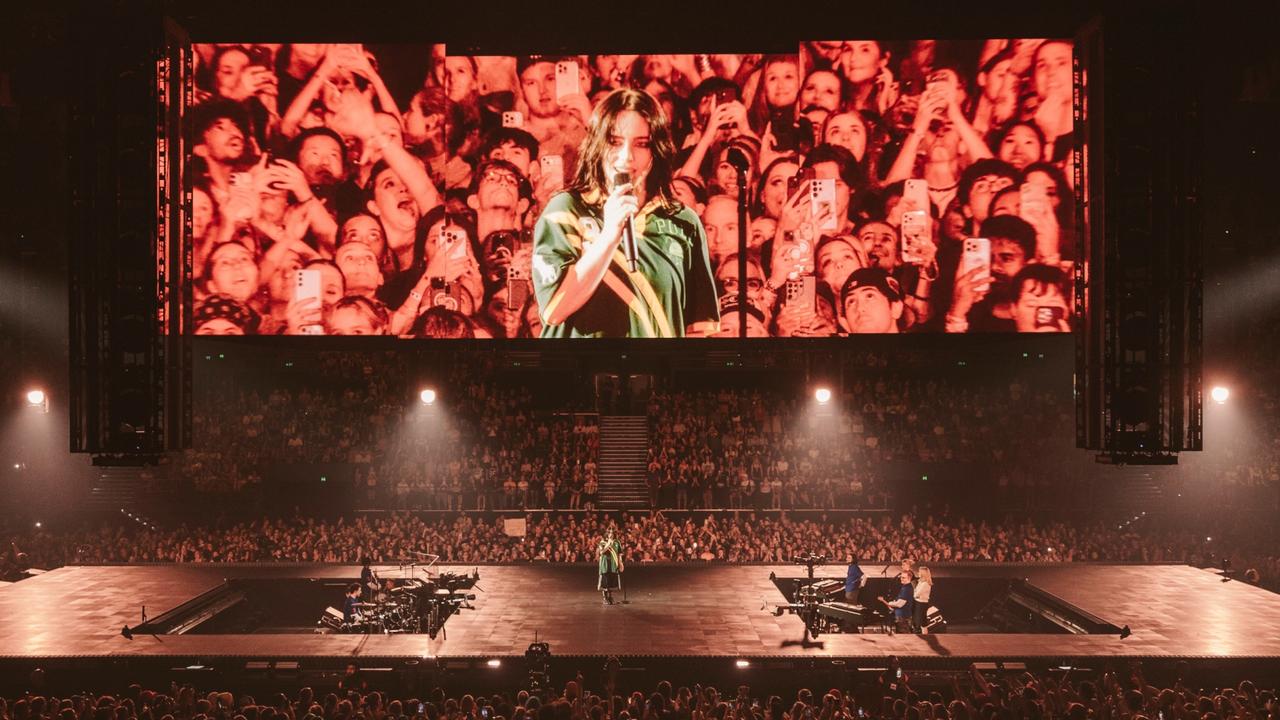Cate Shortland’s Berlin Syndrome: captive thriller
An erotic relationship reveals a darker, more terrifying side in Cate Shortland’s new film.
Cate Shortland’s Berlin Syndrome is a story of captivity and resistance, a movie that explores something she sees at the heart of many traditional fairytales with central female characters. “They’re often really erotic, but their erotic nature renders the woman quite powerless or she becomes a passive recipient of it.”
Berlin Syndrome, adapted by Shaun Grant and based on the novel of the same name by Melbourne author Melanie Joosten, focuses on Clare (Teresa Palmer), a young Australian travelling overseas. Soon after she arrives in Berlin, she meets Andi (Max Riemelt), a personable young man who strikes up a conversation with her on the street. She’s drawn to him, and changes her plans to be with him for a little longer. After they spend a night together, Clare discovers Andi has locked her in when he left for work. She assumes this is a mistake, and on his return he behaves as if this were the case. It takes her a while to realise that it’s not — that he does not intend to let her leave.
Clare is his prisoner, alone in his apartment, unable to leave or contact anyone. Meanwhile, Andi maintains some kind of regular life. He teaches high-school English and occasionally visits his father, an academic. He behaves at first as if his relationship with Clare is singular yet logical and defined, almost reasonable. In this situation, it might seem Andi has all the power; Clare must try to discover if she has any at all, and how she might be able to use it.
There is a sense of threat or danger early in the film, created partly by sound and music.
“I wanted there to be a really erotic, powerful undertow.” Shortland says. “Clare is really physically drawn to him, and he is to her, so there’s this strong sexual connection at the beginning. And we used breath as a kind of rhythm, and as the film progresses, that became darker and darker.”

To Andi, Shortland says, Clare is “a doll. He doesn’t want a real human, he wants a human who will act out his fantasy of what a woman is.” Clare realises this need might be a source of weakness, that finding an “internal space” can be a source of strength for her. “That’s where she goes as a character, because she doesn’t care any more if he likes her or if he doesn’t. She almost doesn’t care if she lives or dies, and in a way that’s her freedom.”
There are all kinds of ways in which the shifts in their relationship can be reinforced visually. Costume designer Maria Pattison, for example, reflected the changes in Andi’s wardrobe, Shortland says. “He puts on this hipster costume at the beginning, to walk around and pick up tourists. But as the film progresses his character starts to wear shirts and pants exactly the same colour as the walls. He starts to recede, and she starts to pop.”
Berlin Syndrome was filmed partly in Melbourne, where the scenes in the apartment were shot, and partly in Berlin. They had two weeks’ rehearsal in Berlin, “in an Airbnb apartment right on the Berlin Wall”, that helped the actors create a sense of the space they were sharing for much of the film. “When we went back to Melbourne we rehearsed on set for five days,” Shortland says. “And then we shot all the stuff in the apartment almost in sequence. That was actually so great because you could just build and build and build on the relationship.”
Shortland brought in a choreographer on her first feature, Somersault, and drew on the skills of “a really physical dramaturge” for her second film, Lore. This helped the child actors find ways to move as if they were exhausted and uncomfortable, as the narrative required.
For Berlin Syndrome, choreographer Daniel Micich did a workshop with the actors, as well as Shortland and cinematographer Germain McMicking, that helped them work out physical relationships and develop a sense of trust, something that made filming the sex scene much more straightforward. “For me it was really good as a director because I can get really cerebral and she takes it straight back to the question, ‘so what would your impulse be?’ ”
The book and film of Berlin Syndrome have much in common, but there are intriguing differences related to chronology, tone and plot. In the film, Andi is a more calculating figure: in the book he is an opportunistic jailer who takes advantage of circumstances.
“He doesn’t set out to capture her,” Joosten says of the character in the novel, “but he realises that by small actions he can have more and more of what he wants, and he goes with that, without thinking of the consequences, of how that destroys the thing he’s trying to capture.”
Creating Andi and his inner life was challenging, she says. “It was difficult because I didn’t want to condone his behaviour at all, I wanted to show why he makes the decisions he makes without suggesting they were at all acceptable.” Joosten’s initial interest, she says, was “to write a novel about power and control in relationships, and about domestic violence”.
“I also wanted to remove that common refrain, ‘why didn’t she just leave?’ I made a situation so extreme that question can’t be asked,” she says. “And then the focus is on the relationship itself and how it functions in this dynamic, where Andi is in control and Clare is not. She has to figure out: how do I exist within this?”
Shortland says she and Palmer talked about Clare as “an Australian suburban girl, with an incredibly open heart, but also real vulnerability and insecurity”. “Teresa and I had both come from that life, and both really related to the idea that somehow being a suburban Australian woman or coming from that background was shameful, and that you kind of wanted to get rid of it.
“A lot of the women working on the project related to that, to the idea that in your 20s, you’re so excited to travel, to be somebody, because it’s as if your life in the suburbs with your family is a dress rehearsal. And then as you get older you realise that life is something incredibly precious, and something to be proud of and not ashamed of.”
Eventually, Clare finds a way to redefine herself, Shortland says. “She’s not playing at being a good girl from suburban Brisbane any more, someone who doesn’t speak out when she’s not spoken to. She becomes more primal, tougher, a better version of herself, because she doesn’t care any more what men think of her.”
Clare had brought her camera with her on her journey; she wants to photograph buildings from the Cold War era, with the aim of making a book. Her interest in photography, Shortland says, is a means of “capturing a life that she couldn’t engage in. She’d be the girl at the party watching everybody dance. She’d be the girl at the party watching other girls go home with young men. And never taking what she wanted.
“Her photos are somehow this way of capturing life, excitement and beauty she somehow felt excluded from. And in a strange way when she meets Andi he offers her that.
“He offers her this incredible life and excitement. But there’s a terrible side to it, as there is in most fairy stories.”
Berlin Syndrome opens on April 20.


